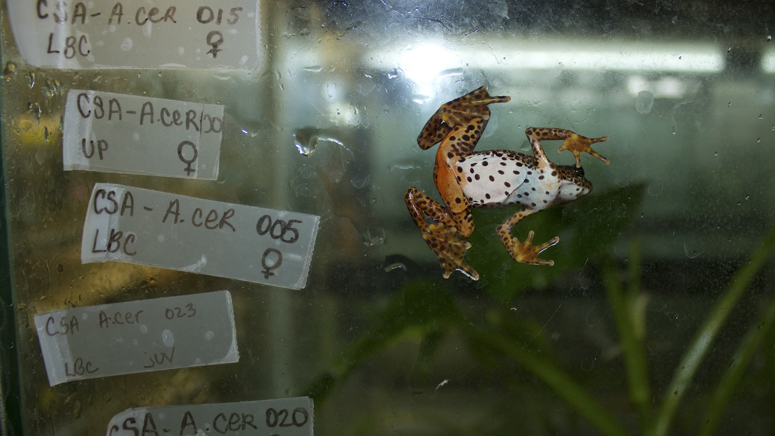
What would a world without frogs or birds look like? Or sound like? It would be a quieter place, certainly, and sadly devoid of charismatic creatures whose vivid colors and intriguing forms delight and awe people of all ages. But, more importantly, these creatures occupy a critical place in the ecological balance of our planet.
Amphibians and birds, as well as many other species, provide natural pest control, eating a wide variety of insects and their larvae, which are often carriers of diseases that affect humans and that consume plants and crops essential to our food supply and economy. As tadpoles, frogs eat algae, helping to maintain clean waters. In turn, as a part of the middle tier of the food chain, these animals also serve as food for larger predators.
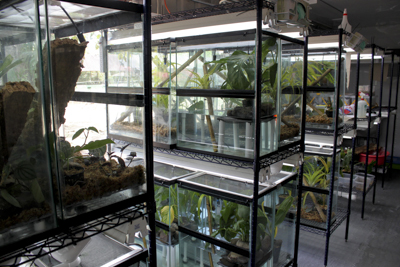
Unfortunately, many amphibian and avian species are dying off at alarming rates, succumbing not only to loss of habitat and pollution but also to invading pathogens. Scientists at the Smithsonian’s National Zoological Park and the Smithsonian Conservation Biology Institute (SCBI), and at research sites around the world, are using biogenomic analyses to study and hopefully reverse this decline.
Robert Fleischer, head of the Center for Conservation and Evolutionary Genetics (CCEG) at SCBI, is a conservation geneticist who uses genomic tools to find solutions to pathogen invasions in amphibian and avian species and to help reintroduce nearly extinct species into their former habitats.
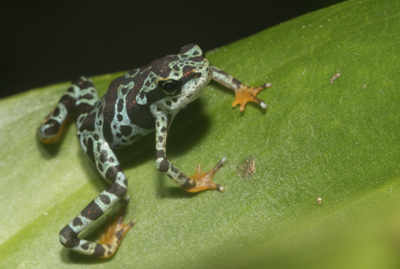
“One of the most pressing problems in conservation is the chytrid fungus (Batrachochytrium dendrobatidis), which has been devastating to many amphibians,” says Dr. Fleischer. “It has led to massive extinction events that could result in the loss of as much as half of the species diversity of amphibians. It varies geographically, tending to be more of a problem in Central and South American tropical regions, although there are susceptible species in temperate zones as well.”
Researchers have determined that some frogs are largely resistant to chytrid, but others are highly susceptible and die off quickly, and a third group shows a mixed response. Brian Gratwicke, an amphibian conservation biologist at SCBI, is working with CCEG scientists to develop genomic analytical tools in an effort to understand and mitigate the drastic effects of the chytrid fungus.
The chytrid fungus arrived in Mexico in the 1960s and has been spreading down through Central and South America ever since, arriving in Costa Rica in the 1980s and in Panama in 1996. The precipitous decline in amphibians includes the rare Panamanian golden frog, a beloved national symbol believed to bring good luck.
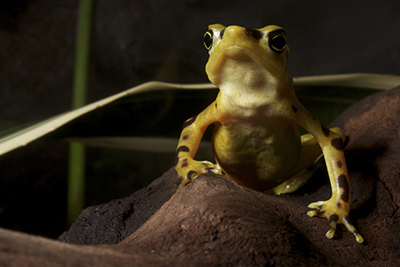
“The golden frog disappeared very quickly once chytrid reached its habitat,” says Dr. Gratwicke. “It was last seen in the wild in 2009. But because we were able to predict the arrival of the disease, we were able to establish some captive insurance colonies of frogs in both the United States and Panama. We have amphibian arks made out of repurposed shipping containers in both the U.S. and Panama. Panama has about 200 different species of amphibians living there, and about 16 especially vulnerable species are held in captive breeding conditions. We’d very much like to be able to introduce them back into the wild and reestablish healthy populations.”
The genomics research has two main thrusts, Gratwicke says. The first is the probiotic approach, initially conceived by biology professor Reid Harris of James Madison University in Virginia, who had been working on Appalachian salamanders in the United States. “He noticed that the salamanders actually brooded their eggs despite being cold-blooded animals, and he wondered why they would be guarding their eggs instead of depositing them in a crack in a log,” says Gratwicke. “His idea was that maybe they were giving their eggs protection from the soil fungi that could decay them, and he found that the salamanders had bacteria on their skin that produced a chemical called violacein, a strong antifungal agent.”
Taking this finding from a fellow amphibian, and by employing microbiome analysis— studying all the microorganisms on the frog’s bodies—Dr. Harris was able to study these communities of bacteria to see how well they fight the chytrid. He then applied the probiotic bacteria on mountain yellow-legged frogs to see if they would have a protective effect. After exposing the frogs to the fungus, the ones he had treated all lived, and the ones he hadn’t treated all died.
“So it was a very clear tale,” says Gratwicke. “But when we tried to do the same thing on the Panamanian golden frogs, the inoculations just didn’t take. Still, by doing the sequencing to try to characterize the entire microbiome of all the frogs, we learned that the 20 percent of the frogs that actually did manage to survive the chytrid exposure had unique kinds of bacteria on their skin.”
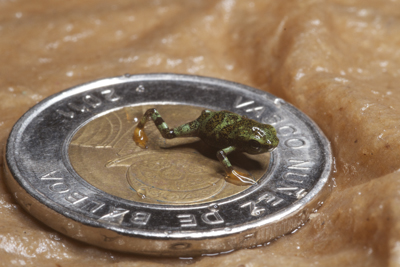
That knowledge is useful in designing a program to reintroduce frogs back into the wild because it may allow researchers to predict which frogs would be likely to survive the exposure. “For the first time we actually have the tools to look at this microbiome, and it’s really opened up a whole new world to us,” Gratwicke says. “We’re also looking at golden frogs that survived the chytrid experiment to see if they were expressing any genes that may have helped them resist the infection.”
“An individual that is responding to a disease may have a different gene expression from one that isn’t,” explains Fleischer, “so we can use a technique called transcriptome analysis to see which genes are turned on when the disease is present. We can also compare the individuals that survive the disease with those that don’t to see what genes may have been responsible for their survival.”
Fleischer adds that all of this research may eventually enable researchers to create medications for afflicted animals, genetically engineer resistance, or at a minimum, to breed frogs with resistant genes and reintroduce them.

“We need to find more targeted approaches to conservation,” he says. “The same thing is true with our work on Hawaiian birds. The honeycreepers there have been suffering from introduced poxvirus and malaria, both spread by mosquitoes that were brought to the island in the 1800s. About 60 percent of the honeycreeper species have died off, and that’s in large part due to these invasive diseases.”
Fleischer notes that one honeycreeper species in particular, the amakihi, shows mixed resistance to the malaria. The disease-spreading mosquitoes live primarily at lower elevations, below about 4,500 feet, but the amakihi can live in both low and high elevations. More than 90 percent of those that get infected in the lower elevations survive, but the survival rate of those from the middle and high elevations—where there are fewer mosquitoes and malaria and thus less natural immunity—is only 40 percent.
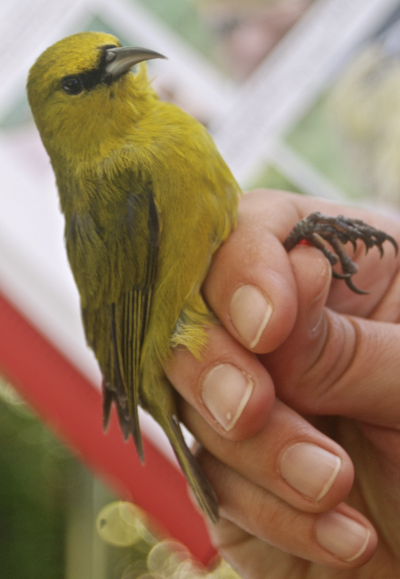
“So we’re looking at the genes in these amakihis using both gene association and transcriptome methods,” he says, “but we are also testing the DNA of specimens collected by museum researchers in the late 1800s and early 1900s, before the malaria arrived. By comparing the genes of historical specimens with modern-day malaria survivors in the same area, we can see how the genes have changed over time.”
Using tools ranging from simple diagnostics to complex genomic analyses, researchers continue to make progress in preserving important species and mitigating the diseases that affect them.
“We’re well positioned here at the Smithsonian to have a broad impact,” says Gratwicke. “We have the opportunity to communicate our message and do good, solid science that can really answer some of these key questions.”
